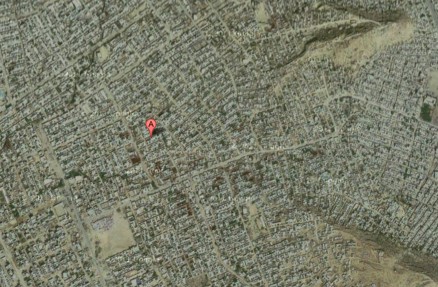
By Santiago Arias
Orangi Town is the largest slum in Asia located in the periphery of city of Karachi, the main city of Pakistan. Two third of Karachi’s population of 17 million lives in katchi abadis (unauthorized settlements on government land) and 1.5 million among them are gathered in the 57 kilometer square of Orangi Town. Early settlers were blue collar workers from the Sindh Industrial and Trading Estate (SITE) and at present 75% of residents work inside the slum working on the garment, leather, solid waste recycling, and service sector (Hasan, 2003). Household size is 8 people and lives in a two-room dwelling with de-facto security of tenure. Despite government intervention, settlements have organized to acquire water, electricity, gas and basic social infrastructure. A household requires US$100 for monthly expenditure, spending US$15 per month on water compared to US$5 per month paid by middle income households (Rahman, 2004). Main infrastructure problems are energy and water shortage (Hasan, 2003).
Community self-financed and self-managed sanitation system
Government initiatives for slum upgrading financed by international organizations were inefficient. The most important program of slum upgrading, KAIRP, funded by the Asian Development Bank (ADB) regularized only 1% of katchi abadis (Hasan, 2006). In response, community organized for the provision of sewage disposal, water supply, schools and clinics, principally under the Orangi Pilot Project (OPP) institutions, affecting 90% of the settlements (Ali, 2001). OPP provided support to construct a self-financed and self-managed sanitation system under the component-sharing concept, where households manage sewerage lines in the lanes and secondary sewers, whilst the government is responsible of main sewers and treatment plants (Hasan, Orangi Pilot Project: the expansion of work beyond Orangi and themapping of informal settlements, 2006). This organization later participated in government programs for intermediate and primary infrastructure development. The success of this approach is based on understanding the needs of the informal sector and developing low cost solutions with appropriate technology, and strong lobbying capacities aimed at different levels of government.
Improving the infrastructure through a private, public and community partnership
The Pakistan government has a distressed economy with a budget deficit of 8.4% of GDP by end-FY2010, 20% inflation, and limited capacity to raise funds from taxes (World Bank, 2011). Development relies on foreign assistance for infrastructure investments, leading to indebtedness (public debt to GDP ratio of 61%). Last year, foreign direct investments declined 57% (World Bank, 2011) because Pakistan is perceived as a high risk country. For slum, the successful local response requires increase the supply of water and electricity. Energy generation is crucial and should be privatized to increase efficiency. Government should be in charge of the high and medium tension electric power transmission (this includes an increase in tariff for users). The internal (low tension) system inside the katchi abadi should be erected by the community building on the OPP institutions. The sanitary system in place needs to improve and raise construction standards and continue building on community and government partnership. Water supply construction could be paid with private management of the service since households are paying for private tankers. In this framework, I recommend to improving the infrastructure through a private, public and community partnership.
References
Research and Training Institute. (2011). Orangi Pilot Project. Retrieved from http://www.oppinstitutions.org/
Ali, H. (2001). Orangi Pilot Project. Kitakyushu Initiative Seminar on Public Participation. Kitakyushu.
Google. (2012). Google Earth (Version 6.0.3.2197) [Software]. Available from http://www.earth.google.com
Hasan, A. (2003). Urban Slums Reports: The case of Karachi, Pakistan. Global Report on Human Settlements.
Hasan, A. (2006). Orangi Pilot Project: the expansion of work beyond Orangi and themapping of informal settlements. Environment & Urbanization, 18(2), 451’480.
Pakistan, S. B. (2011). Annual Report 2010-2011.
Rahman, P. (2004). Katchi abadis of Karachi a survey of 334 katchi abadis.
Simone, A. (2004). People as Infrastructure: Intersecting Fragments in Johannesburg. Public Culture, 16(3), 407-429.
World Bank. (2011). Pakistan Economic Update.
Zaidi, A. (2001). From the Lane to the City:The Impact of the Orangi Pilot Project’s Low Cost Sanitation Model. London: WaterAid Report.